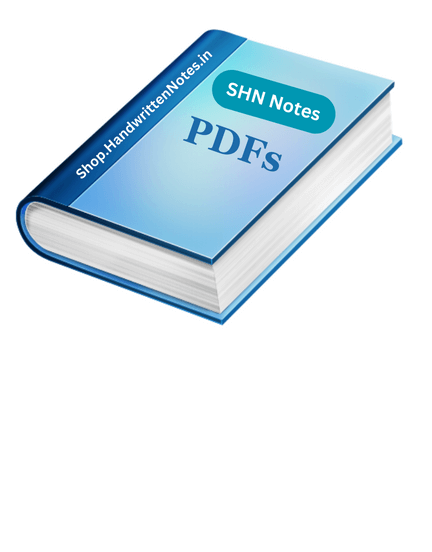402046: Data Analytics laboratory Notes
Original price was: ₹160.00.₹120.00Current price is: ₹120.00.
Prerequisites: Engineering Mathematics, Artificial Intelligence & Machine Learning, Numerical
and Statistical Methods, Fundamental of Mechanical Engineering
Course Objectives:
1. To explore the fundamental concepts of data analytics.
2. To understand the various search methods and visualization techniques.
3. To apply various machine learning techniques for data analysis.
Course Outcomes:
On completion of the course, the learner will be able to
CO1:UNDERSTAND the basics of data analytics using concepts of statistics and probability.
CO2:APPLY various inferential statistical analysis techniques to describe data sets and
withdraw useful conclusions from acquired data set.
CO3:EXPLORE the data analytics techniques using various tools
CO4:APPLY data science concept and methods to solve problems in real world context
CO5:SELECT advanced techniques to conduct thorough and insightful analysis and interpret
the results
All these Notes can be used for submission
Description
TERM WORK:
A] Experiments (Any 6)
Sr. No. Data Domain Objective Methodology Data type
1 Thermal / Heat Transfer / HVAC / Fluid
Mechanics / Fluid Power
Predictive / Prescriptive / Descriptive /
Diagnostic (but not limited to)
Statistical / mathematical
/numerical/computational/intelligent
(but not limited to)
Numeric or image based or data in any
suitable form
2 Solid Mechanics / Design
3 Machining / Manufacturing
4 Automation & Robotics
5 Maintenance / Reliability / Condition
Monitoring
6 Quality Control
7 Materials and Metallurgy
8 Energy Conservation and Management
9 Industrial Engineering, Estimation, and
Costing
10 Automotive technology
B] List of Assignments (Any Three)
The survey of methods used for data analysis in the data domain mentioned above (Any Three) and
discussion on any case studies.
Guidelines for selection of data domain, source, size, etc.:
The data domain must be selected from various fields of mechanical engineering such as (but
52 | P a g e
not limited to) thermal, heat power, design, manufacturing, automotive, HVAC, condition
monitoring, process industry, solid and fluid mechanics, quality, materials and metallurgy,
automation & robotics, energy conservation and management, ERP, Industrial engineering,
estimation, and costing, etc.
The volume of data should be considerably larger size in view of extracting meaningful
insights, such as hidden patterns, unknown correlations, trends, and customer preferences
through tools such as machine learning, deep learning, reinforcement learning, etc. Though
the data size cannot be bluntly defined or there is no threshold, however, the data gathered
from small trials/experimentation to analyse the input-output relationship should not be
considered such as a trial on an external gear pump for studying its characteristics
considering limited range of parameters for few trials. The appropriate data size must be
selected as per the relevant data domain to yield a reliable model. For example, in the case of
vibration-based condition monitoring based on numeric data, the size of data gathered
depends on the sampling frequency of data acquisition and ranges from 5 kHz to 20 kHz or
even more than that as per the data domain. Same for image data, the minimum number of
images with appropriate resolution should be selected w.r.t data domain to yield a robust
model.
The data collected through real-time experiments is preferred however in case of no
resources/facility available, data collected through simulation, survey, etc. can also be
considered. The benchmark datasets made available by standard
technical/academic/research/commercial/professional societies and organizations are also
allowed.
The standard instrumentation is preferred for performing experiments and data collection;
however, the use of open-source hardware for building in-house low-cost data acquisition
systems is also recommended.
The choice of programming language and software depends on the data domain and the
provision of the methodology used for its processing. Any standard programming language
and data analytics software can be used.
The approach mentioned above (but not limited to) should be considered while defining the
problem and objectives, selecting the data domain, and deciding the methodology. The
methodology can be statistical, mathematical, numerical, computational, or intelligent.
Subject : Data Analysis Laboratry
Size: 2.5 MB
Pages: 61
SEM : VII MECHANICAL ENGINEERING
If you need Dataset for ruuning this code file You can always contact me through notes While buying Product
Vendor Information
- Store Name: ENGINEERING WORLD IN THE UNIVERSE.
- Vendor: ENGINEERING WORLD IN THE UNIVERSE.
-
Address:
Sagar hotel
-
Ahmadnagar 4112456
Maharashtra - No ratings found yet!
-
Sale!

Fundamental of Thermodynamics Handwritten Notes PDF
Original price was: ₹80.00.₹50.00Current price is: ₹50.00. Add to cart -
Sale!

Engineering chemistry water technology, Engineering Materials, Fuels, Spectroscopic Techniques, Corrosion Science unit notes
Original price was: ₹200.00.₹150.00Current price is: ₹150.00. Add to cart -
Sale!

Unit VI- File Handling and Directories Notes PDF
Original price was: ₹30.00.₹19.00Current price is: ₹19.00. Add to cart -
Sale!

Multiple Integrals and their Applications Part 2 – (Double Integration) Handwritten Notes
Original price was: ₹40.00.₹25.00Current price is: ₹25.00. Add to cart -
Sale!

Water technology handwritten notes PDF Download
Original price was: ₹50.00.₹25.00Current price is: ₹25.00. Add to cart -
Sale!

Integral Calculus handwritten notes pdf – SHN Notes
Original price was: ₹50.00.₹25.00Current price is: ₹25.00. Add to cart








Reviews
There are no reviews yet.